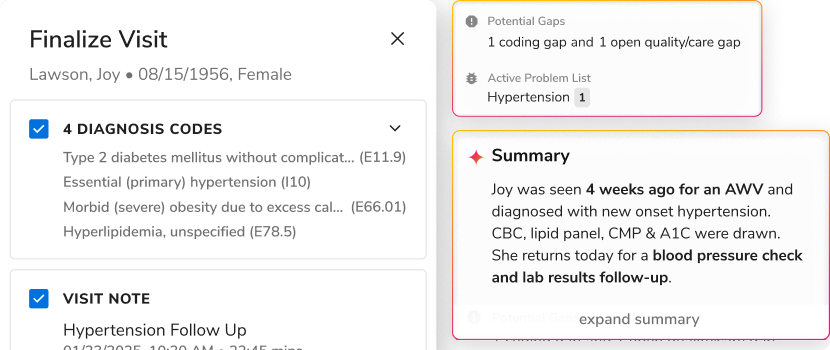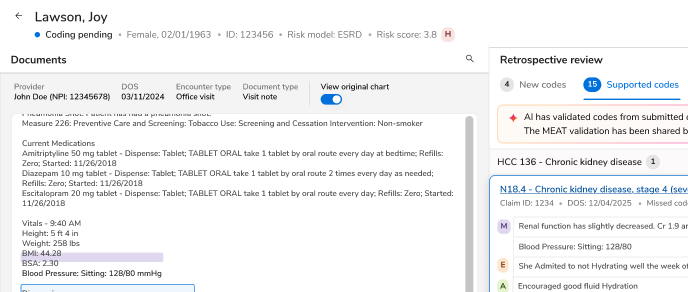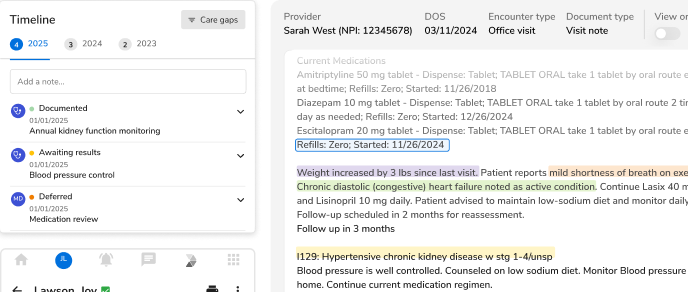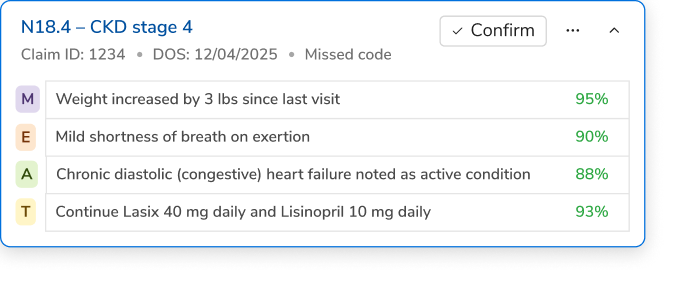US Healthcare in 2019: Top Stories That Changed the World of Care Delivery

Amazing, breathtaking, reformative, groundbreaking. No single adjective suffices to describe how 2019 changed US healthcare. With the end of the decade, we saw innumerable events happening — from massive health information technology mergers to new major government regulations.
While the year was full of exciting events happening all around, 365 days of the year, some incidents took us by surprise, and they pose great uncertainty for the year to come.
Let’s take a moment here to look at some of the biggest stories that were under the spotlight in the year 2019:
1. New healthcare with inspirations from “Twitterverse”

Source: Twitter
“As our latest #PriceTransparency initiative begins to take effect, we’re asking the Twitterverse to helps us make sure patients have access to the basic hospital pricing information (called the chargemaster) that is now required to be posted online.”
-Seema Verma, Administrator, CMS
One tweet and things changed drastically. CMS passed the new price transparency rule, effective January 1, which required hospitals to publish their standard charges online in a “machine-readable” format. On January 17, 2019, this rule was followed by one of the biggest challenges of the CMS when it launched the #WheresThePrice campaign, where Seema Verma called upon the population to report any hospital not providing their prices in an electronically-readable format on their website.
Even though this rule faced criticism from some hospitals, it indicated the growing role of technology and online social media in the field of healthcare.
2. Data breaches continue to become a major threat to organizations
Despite advancements in healthcare, the alarming trend of data breaches in healthcare is nowhere near its end. According to HealthcareInfoSecurity, there have been 229 data breaches affecting 6.1 million individuals since the start of 2018.
July 2019 saw 50 healthcare data breaches of more than 500 records reported to the Department of Health and Human Services’ Office for Civil Rights, which was 13 more breaches than the monthly average for 2019 and 20.5 more breaches than the monthly average for 2018. According to the November 2019 Healthcare Data Breach Report by HIPAA Journal, the month of July was the second-worst month in terms of the number of healthcare records exposed. An estimated 25 million records were exposed that month. However, the month of October recorded the highest amount of breaches, witnessing a total of 52 breaches.

Source: HIPAA Journal
Some of the largest healthcare data breaches in 2019, along with the number of impacted patients, include:
- AMCA Data Breach- 25 million patients
- Dominion National- 2.96 million patients
- UW Medicine- ~970,000 patients
- Oregon Department of Human Services- ~645,000 patients
- Navicent Health- ~278,000 patients
3. New avenues to define the next stage of healthcare interoperability
2019 marked the dawn of the age of APIs (Application Programming Interface) in healthcare. The best part about APIs is that they enable systematic data exchange and flow in disparate healthcare operations.
In the first half of the year, Blue Button 2.0 took everyone by storm. Blue Button 2.0 came with a much broader impact potential than the original Blue Button initiative. Blue Button was launched in 2010 with features to download and print patient data. Blue Button 2.0 came with an additional facility of uploading data on trusted applications. With the second version of Blue Button, patients can be more responsible for their healthcare planning, sharing their data with credible sources like health apps, claim apps, among others.
With the indication by CMS towards mandating that Medicare Advantage plans adopt data-sharing platforms that linked with Blue Button 2.0 from the beginning of the year 2020, we are moving closer to health data portability for all.
APIs are helping to amalgamate the different data formats and facilitate easy exchange between platforms. With data unification across prescribed drugs, primary care treatments received, costs of care, type of Medicare coverage, and four years of claims data, Blue Button 2.0 is driving a new healthcare revolution.
4. Healthcare adopting “Together We Win” ideology
Consolidation in the healthcare sector has accelerated in recent years, reshaping the way health systems, hospitals, and independent physicians across the country operate. According to a Definitive Healthcare survey, industry consolidation was listed as the most important trend of the year, leading the way with 25.2% votes.

Source: Definitive Healthcare
Some of the top mergers in healthcare include:
- Centene Corp. announced a $17.3 billion merger with WellCare Health Plans in March, a move seen as doubling down on the marketplaces established by the Affordable Care Act.
- Dignity Health and Catholic Health Initiatives finalized a $29 billion megamerger between the two Catholic health systems in February. Renamed "CommonSpirit," the Chicago–based health system has a footprint in 21 states, with more than 700 care sites and 142 hospitals.
- Total Health Care and Priority Health received final regulatory approval from the Michigan Department of Insurance and Financial Services (DIFS) in late November.
- Harvard Pilgrim Health Care and Tufts Health Plan announced an intention to merge in August, potentially serving nearly 2.4 million plan members across New England.
5. Bringing patients back the control of their data
The MyHealthEData initiative, launched in March 2018, aims to “empower patients by ensuring that they control their healthcare data and can decide how their data is used while keeping that information safe and secure.” In July 2019, CMS upped the ante with the MyHealthEData Initiative for better data access by expanding this initiative and announcing the pilot of “Data at the Point of Care.”
The Data at the Point of Care (DPC) pilot will be connecting providers with Blue Button, where providers can access claims data to learn more about their patients and their previous diagnoses, procedures, and prescriptions. While providers had to comb through several hundred data sets previously, the DPC program would aim to make data more easily accessible and within existing workflows.
In addition to enabling data access, CMS has also been targeting information blocking, as reflected by 2019 MyHealthEData updates. With these measures, both patients and providers will have the required insights to make more informed healthcare decisions.
6. Regulations that not only changed but redefined US healthcare
Similar to last year, the government, CMS, and other agencies have been active in terms of launching new regulations. Almost every month, we witnessed a new regulation, a new rule that not only modified the way we look at healthcare, but changed our perception of its future.
In April 2019, ONC published its second draft of the Trusted Exchange Framework and Common Agreement (TEFCA), focusing on three high-level goals:
- Providing a single ‘on-ramp’ to nationwide connectivity
- Enabling Electronic Health Information (EHI) to securely follow the patient wherever needed
- Supporting nationwide scalability
TEFCA was a common set of principles that serve as “rules of the road” for nationwide electronic health information exchange across disparate health information networks (HINs). Additionally, it is also an attempt to resolve some long-standing interoperability issues.
Also, HHS announced five new voluntary payment models, divided into two paths. The PCF, or Primary Care First, path includes two voluntary, five-year payment models focusing on primary care practices. The payment models will be launched in 26 regions throughout the United States in 2020.
- PCF General: For primary care practices prepared to assume substantial financial risk in exchange for reduced administrative burden and performance-based payments.
- PCF-High Need Populations (PCF-HNP): Focused on encouraging advanced primary care practices, including hospice and palliative care services, to assume accountability for highly needy, seriously ill beneficiaries who lack a primary care practitioner or effective care coordination.
The best part of these new payment models is that the practices participating under any of the two PCF payment models will receive a simplified total monthly payment that will allow clinicians to focus on patient-centered care.
In November 2019, CMS released the final 2020 Physician Fee Schedule Proposed Rule. The PFS proposed rule adds services to the telehealth list and other policies affecting the calculation of payment rates. 2019 proposed PFS rules included new proposals to change documentation, coding, and payment requirements to reduce administrative burden and improve payment accuracy for office/outpatient Evaluation and Management visits. In addition, a proposal was also added to pay separately for two newly defined physicians’ services provided using communication technology.
7. From “Hey, Alexa” to the digital world of healthcare
Talking about medical devices and such great tech is not a new thing for healthcare; however, tech giants such as Amazon are coming up with such great new devices that it already seems to be the 22nd century.
In September 2019, Amazon launched the pilot of its optional new company health care benefits program. Called Amazon Care, the program aims at providing employees with a telehealth app that could help them with any health-related activity. Similarly, Amazon's at-home prescription drug delivery company, PillPack, unveiled its first direct integration with BCBS Massachusetts’ member app, MyBlue.
The world of medical devices didn’t stop at just care and population health management devices. The HeartLogic Heart Failure Diagnostic from Boston Scientific can predict potential heart failure weeks in advance and detect early signs of deteriorating heart failure with approximately 70% sensitivity.
8. Social determinants of health were the talk of the town, and still are!
If I only had a penny every time I discuss the importance of the social determinants of health. According to a survey, 68% of the respondents were challenged by a social risk factor that impacted their medical care.
Even in the major contracts this year, SDOH factors didn’t fail to grab their spots. The Accountable Health Communities Model (AHCM) focused on the importance of addressing health-related social needs. There are 30 organizations participating in the model from states such as California, Connecticut, Delaware, New York, Oregon, and Vermont, among others. The program has two tracks:
- Assistance Track: Provide community service navigation services to assist high-risk beneficiaries with accessing services to address health-related social needs
- Alignment Track: Encourage partner alignment to ensure that community services are available and responsive to the needs of the beneficiaries
The Road to a New Decade of Healthcare
While these steps are just a snapshot of everything big that has happened, the journey is not going to stop here any time soon. In the upcoming year and the decade of US healthcare, there will be a new landscape, new domains, and new processes. This makes it crucial that we look beyond the conventional and take the right steps towards a better future of healthcare.
All in all, focusing on keeping people healthy has to be the priority, and not putting out fires as they come.
Here’s to a new year, hoping we come closer to our goal of providing a healthcare system accessible to the people, all the time.
To learn how you can prepare your organization for the modern challenges of the new decade of healthcare with a data activation platform, get a demo.
For more updates, subscribe.

.png)





.png)









.svg)
.svg)

.svg)

